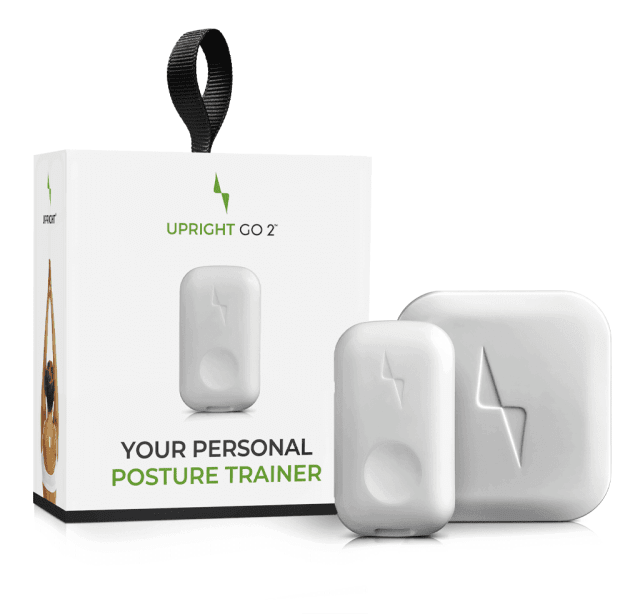How to Fix Forward Head Posture
Max Frenkel

Most of us are taught from a young age to put our best foot forward when trying to make a good impression. One body part we should not be putting forward, figuratively or otherwise, is our head. Forward head posture – more commonly known as “Text Neck” or “Screen Slouch” – is a musculoskeletal state where the head appears to be positioned in front of the body. Without getting too technical, this occurs when the skull is out of alignment with the spine, causing it to lean forward in an unhealthy and, frankly, unattractive manner (think Mr. Burns from The Simpsons). What does this mean for approximately 78% of the population affected by this less-than-desirable posture? Are you among them and what can be done to correct it? Read on for all the answers.
How to Identify Forward Head Posture
There’s a simple test you can do at home to determine whether your head and neck are out of sync. Stand with your back against a wall and your heels shoulder-width apart. Press your butt up against the wall (no twerking now!). Make sure your shoulder blades are touching the wall – it may help if you squeeze your shoulder blades together. Next, check to see if the back of your head is touching the wall. If it isn’t, there’s a good chance you have forward head posture, which usually also means weak neck muscles.
The symptoms of forward head posture are many and varied. They range from neck pain and upper back pain to headaches, migraines, and even sleep disorders. Telltale signs include overly rounded shoulders and a craned-forward neck that can make you appear old before your time.
It’s hard to pinpoint the exact cause of forward head posture because it varies from person to person. However, one should look out for the usual suspects: extended smartphone/computer use, sleeping without proper head/neck support, driving for long stretches, carrying heavy backpacks. Essentially, any activity that requires you to do things with your arms out in front of your body (which, let’s face it, is pretty much everything). The risk of developing forward head posture increases if you have a profession that involves repetitive hand movements (e.g., computer programmers, hairstylists, dentists… that guy who stands on the runway and waves at airplanes, etc.). Equally risky are hobbies that make dominant use of one side of the body (e.g., golf, swimming, martial arts, etc.).
Just How Harmful Is This Type of Posture?
If left unchecked, forward head posture can lead to all sorts of long-term health issues such as shoulder pain and reduced mobility, arthritis of the neck, bulging or herniated discs, to name a few. More and more people are coming around to the idea that prevention is better than cure and are seeking wellness solutions that protect their bodies from potential strain or injury. Thanks to advances in wearable health tech and increased awareness surrounding the problem, forward head posture is now totally preventable.
How to Fix Forward Head Posture
If you’ve read this far and are scared to lift your pinky finger for fear of screwing up your posture, you can breathe a sigh of relief. There are a number of practical measures you can take today to safeguard your back health for years to come.
The Spinal Stretch
When we’re immersed in our work, it’s so easy to forget our basic needs like drinking water, taking bathroom breaks, and stopping to stretch our bodies. It’s what separates us from the robots. Sitting for extended periods puts a tremendous strain on our necks and backs. The best way to relieve this pressure is simply to get up and move around.
Surely you can spare 60 seconds every couple of hours to do neck stretches? That minute might actually save your neck!
Fix Your Ergonomics
If you’re going to be sitting in front of a computer for hours at a time, you should probably make sure you’re not putting yourself at unnecessary risk. Raise your screen so that the top third is at eye-level – if it’s not the adjustable kind, you may need to prop it up on a pile of books or adjust the height of your desk or chair. It’s also worth considering how far your face is from the screen. Aim for somewhere between 18 and 24 inches (45.7 and 61cm) and position your chair accordingly.
Protect Your Neck
If you’ve ever woken up with a sore neck from “sleeping funny”, you’ll know there’s nothing remotely humorous about it. It’s a sign that you have poor sleep posture (yes, it’s a thing) and you’d be well advised to nip it in the bud before it becomes a waking nightmare. Get yourself a supportive neck pillow that firmly cradles your head and keeps it from rolling off the edges. Memory foam pillows are a good option as they conform to the natural curvature of your head and neck.
Train That Crane!
When you think of posture trainers, those unsightly back braces and back belts probably come to mind. What is this, the 1930s?! Today, there are far more advanced solutions on the market, such as the UPRIGHT GO 2. This tiny smart wearable has been specially designed to correct forward head posture by promoting proper body alignment. And that’s not all it does. Training with the GO 2 helps the user build strength in their core and back muscles – the very foundations of upright posture. As they develop muscle memory, users are able to stay upright for longer… even without the device. Adopting a more open body position has the added benefit of increased blood flow and oxygen, which are known to improve brain function.
Are you ready to face forward head posture head-on?
Try the UPRIGHT GO 2 today – it’ll give new meaning to forward-thinking!

You Might also Like
Search
Sign up to our newsletter
Follow Us On
Popular
Revisit the GO 2/S Device Setup
How to get started
Finding your upright position
How to find your target upright posture
Calibration
Check out the UPRIGHT GO 2


